Home>Garden Essentials>How Does Strategic Plant Selection Like Crop Rotation Help Control The Population Of Animal Pests
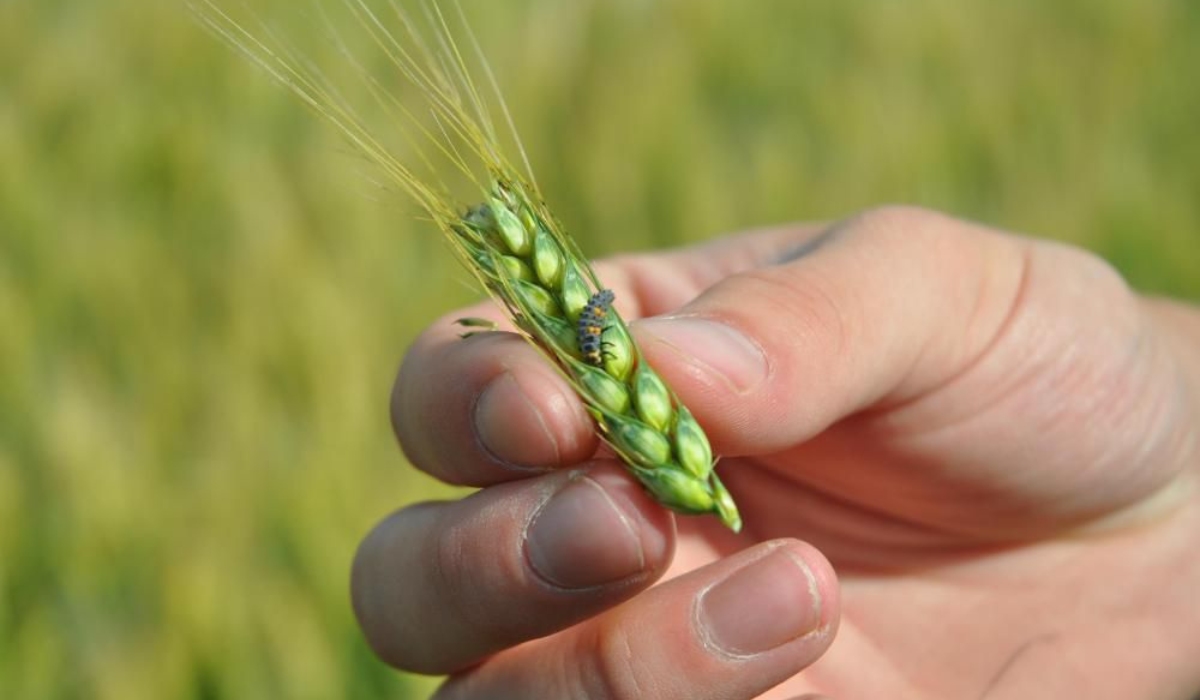

Garden Essentials
How Does Strategic Plant Selection Like Crop Rotation Help Control The Population Of Animal Pests
Modified: March 15, 2024
Discover how strategic plant selection, such as crop rotation, can effectively control the population of animal pests in your garden.
(Many of the links in this article redirect to a specific reviewed product. Your purchase of these products through affiliate links helps to generate commission for Storables.com, at no extra cost. Learn more)
Introduction
Welcome to the world of agriculture, where the delicate balance between humans and nature is constantly at play. As farmers and gardeners, one of our greatest challenges is dealing with animal pests that can wreak havoc on our crops and plants. These pests, ranging from insects to rodents, can quickly multiply, causing significant damage and threatening our livelihoods.
Controlling animal pests in agriculture is a critical aspect of successful farming. Traditional methods such as the use of chemical pesticides can be effective, but they come with their own set of drawbacks. These pesticides can harm beneficial insects, contaminate soil and water, and pose health risks to humans and animals alike.
That’s where strategic plant selection, particularly through the practice of crop rotation, comes into play. By carefully planning and rotating our crops, we can harness the power of nature to naturally manage and control animal pests while minimizing the use of harmful chemicals.
Key Takeaways:
- Strategic plant selection, like crop rotation, helps farmers naturally manage and control animal pests, reducing the need for harmful chemical pesticides and promoting a healthier farming ecosystem.
- By strategically selecting and rotating crops, farmers disrupt pest life cycles, reduce pest attractiveness, and enhance soil health, leading to more sustainable and environmentally-friendly pest management in agriculture.
Read more: How Does Crop Rotation Help Crop Yield
Importance of controlling animal pests in agriculture
Animal pests can cause significant damage to crops and plants, resulting in reduced yields and financial losses for farmers. Insects like aphids, caterpillars, and beetles can chew through leaves, devour fruits, and transmit diseases. Rodents such as mice and rats can dig tunnels, gnaw on roots, and even consume entire crops. It’s crucial to find effective and sustainable ways to manage these pests to ensure the health and productivity of our gardens and farms.
Beyond the economic impact, controlling animal pests is also important for ecological reasons. Pests can upset the natural balance of ecosystems by preying on beneficial species or outcompeting them for resources. This disruption can have ripple effects on the entire food chain, impacting not just our crops but also pollinators, birds, and other wildlife that rely on a healthy and diverse environment.
By implementing strategic plant selection practices like crop rotation, we can strike a balance between protecting our crops and maintaining a harmonious ecosystem. In the next sections, we’ll explore the concept of strategic plant selection and delve into the specific benefits of crop rotation in pest management.
Importance of Controlling Animal Pests in Agriculture
Animal pests pose a significant threat to the success and sustainability of agricultural practices. These pests include insects, rodents, birds, and other wildlife that can cause extensive damage to crops, leading to reduced yields and financial losses for farmers. Implementing effective pest management strategies is crucial to protect our agricultural investments and ensure a stable food supply.
One of the primary reasons for controlling animal pests in agriculture is to safeguard crop health and productivity. Pests such as aphids, caterpillars, and beetles can devour leaves, flowers, and fruits, leading to stunted growth or complete crop loss. In addition to directly feeding on crops, pests can also transmit diseases, further compromising plant health. By preventing or minimizing pest infestations, farmers can promote the growth and development of their crops, improving overall yield and quality.
Controlling animal pests also has economic implications. Prolonged pest infestations can result in significant financial losses, as farmers may need to invest extra resources in pest control measures or resort to purchasing costly pesticides. Additionally, decreased crop yields due to pest damage can impact market availability and increase prices for consumers. By effectively managing pests, farmers can reduce the economic burden associated with pest-related crop losses and maintain profitability.
Furthermore, the control of animal pests in agriculture is essential for environmental sustainability. Traditional pest control methods often rely on the use of chemical pesticides, which can have detrimental effects on the environment. Pesticides can contaminate soil, water sources, and neighboring habitats, harming non-target organisms, pollinators, and beneficial insects. They can also accumulate in the food chain, leading to long-term ecological consequences. By adopting alternative pest management techniques that focus on natural controls, such as strategic plant selection, we can minimize the negative environmental impact associated with chemical pesticide use.
Additionally, proper pest control fosters biodiversity and ecological balance. Pests can disrupt the natural balance of ecosystems by preying on beneficial insects or outcompeting them for resources. By reducing pest populations, we can help create a more stable environment that supports a wide range of plant and animal species. This, in turn, promotes a healthier and more resilient ecosystem that can better withstand disease outbreaks and other environmental stresses.
Ultimately, controlling animal pests in agriculture is crucial for the long-term sustainability of our food production systems. By using innovative techniques such as strategic plant selection and embracing integrated pest management approaches, we can strike a balance between pest control, environmental conservation, and economic viability. The upcoming sections will delve into the concept of strategic plant selection and explore how practices like crop rotation can effectively aid in controlling animal pests.
Overview of Strategic Plant Selection
Strategic plant selection is a technique used in agriculture to manage plant health, promote biodiversity, and control animal pests. It involves carefully choosing and rotating crops based on their unique characteristics and relationship with pests. By selecting crops strategically, farmers can create an environment that is less favorable for pests, reducing the risk of infestations and minimizing the need for chemical interventions.
The principle behind strategic plant selection is to disrupt the life cycle and feeding patterns of pests by altering the composition and arrangement of crops in a field or garden. Different plants have varying levels of attractiveness to pests, and by alternating crops, we can discourage pests from establishing large populations and prevent them from building resistance to specific control measures.
Diversity is a key component of strategic plant selection. Planting a variety of crops with different growth habits, fragrances, and nutritional preferences can confuse pests and create a less appealing environment. This approach makes it harder for pests to find suitable hosts, as they may encounter unfamiliar plants or be deterred by certain characteristics.
In addition to diversity, crop rotation is a common practice within strategic plant selection. Crop rotation involves changing the type of crops grown in a specific area from one growing season to another. The goal is to disrupt the life cycle of pests that have specific host plant preferences, preventing them from finding a continuous food source and reducing their population over time.
There are different rotation patterns used in crop rotation, such as cyclic rotations and sequential rotations. Cyclic rotations involve growing crops in a specific order, while sequential rotations involve growing crops in a consecutive sequence, typically in a two or three-year cycle.
Strategic plant selection is not limited to annual crops; it can also be applied in perennial systems, orchards, and even home gardens. In perennial systems, mixing diverse plant species and integrating beneficial plants can create a habitat that supports natural enemies of pests, such as predatory insects and birds. This natural pest control can further enhance the effectiveness of strategic plant selection.
Overall, strategic plant selection is a proactive and sustainable approach to pest management. It harnesses the power of nature by leveraging the natural defenses and interactions among different plant species. By incorporating diversity and crop rotation into our farming practices, we can create an environment that is less appealing to pests and promote healthy plant growth without relying solely on synthetic chemical pesticides.
Understanding Crop Rotation
Crop rotation is a fundamental practice in agriculture that involves growing different crops in a defined sequence on the same land over successive seasons. It is an ancient technique used by farmers worldwide to improve soil fertility, manage pests and diseases, and optimize crop yields.
The principle behind crop rotation is to reduce the buildup of soil-borne pests, diseases, and nutrient depletion that can occur when the same crop is grown continuously in the same area. Different plant species have varying nutrient requirements and cycles, and by rotating crops, farmers can effectively break pest and disease cycles, replenish soil nutrients, and improve overall soil health.
There are several key components to understanding crop rotation:
Read more: How Does Crop Rotation Help Preserve Soil?
Diversity of Crops
Crop rotation involves growing a diverse range of crops in a given field or garden. This diversity helps to disrupt the life cycles of pests and diseases that are specific to certain plant species. By planting different crops, farmers can decrease the risk of pests and diseases becoming established and reduce the need for chemical interventions.
Rotation Patterns
There are various rotation patterns used in crop rotation, depending on factors such as climate, soil type, and specific farming goals. Common rotation patterns include cyclic rotations and sequential rotations. Cyclic rotations involve growing crops in a specific order, such as alternating between legumes, cereals, and root vegetables. Sequential rotations, on the other hand, involve growing crops in a consecutive sequence, typically over a two or three-year cycle.
Complementary Crop Pairings
Crop rotation often involves pairing crops with complementary characteristics. For example, legumes, such as peas or beans, are commonly included in rotation patterns because they have the ability to fix nitrogen from the atmosphere into the soil, enriching it for subsequent crops. Additionally, certain crops may have allelopathic properties, which means they release natural chemicals that inhibit the growth of pests or weeds. By strategically pairing crops, farmers can optimize pest control and nutrient cycling.
Timing and Succession Planting
The timing of crop planting and succession planting are essential aspects of crop rotation. Succession planting involves staggering the planting of crops so that they mature at different times, preventing the simultaneous availability of resources for pests. This practice can also help maximize the use of available space and extend the harvest season.
Implementing crop rotation requires careful planning and consideration of factors such as crop compatibility, nutrient requirements, and pest susceptibility. Farmers must also keep in mind other aspects, such as the previous crop’s residue, which can impact the success of subsequent crops. By implementing crop rotation effectively, farmers can improve soil fertility, reduce the reliance on chemical inputs, and create a more sustainable and resilient farming system.
Read more: How Does Crop Rotation Help Soil Fertility
How Strategic Plant Selection Aids in Controlling Animal Pests
Strategic plant selection, particularly through practices like crop rotation, plays a vital role in controlling animal pests in agriculture. By implementing these techniques, farmers can reduce pest infestations, limit crop damage, and minimize the need for chemical pesticides. Here’s how strategic plant selection aids in controlling animal pests:
Disrupting Pest Life Cycles
Pests have specific host preferences and life cycles. By strategically selecting and rotating crops, farmers can disrupt the life cycles of pests. Planting crops that are not preferred hosts for specific pests can interrupt their ability to reproduce and build large populations. When pests cannot find suitable hosts in a crop rotation cycle, their populations naturally decline over time.
Reducing Pest Attractiveness
Strategic plant selection aims to reduce the attractiveness of crops to pests. By including a diverse range of crops in the rotation, pests encounter unfamiliar plants or encounter barriers, such as plants with strong odors or physical characteristics that deter them. This decreases the overall appeal of the crop rotation area to pests, making it less likely for infestations to occur or spread.
Encouraging Natural Pest Control
Strategic plant selection can promote natural pest control. By creating a diverse habitat with a variety of plant species, predators and beneficial insects are attracted to the area. These natural enemies, such as ladybugs, lacewings, and parasitic wasps, help to keep pest populations in check by preying on or parasitizing pests. This biological control can significantly reduce the need for chemical interventions and provide long-term pest management solutions.
Enhancing Soil Health
Strategic plant selection, including the incorporation of nitrogen-fixing crops like legumes, helps improve soil health. Nitrogen-fixing plants have the ability to convert atmospheric nitrogen into a usable form for plants. This enrichment of nitrogen in the soil benefits subsequent crops in the rotation, promoting their growth and making them less susceptible to pest damage. Healthy soil supports vigorous plant growth, making crops more resilient against pests and better able to withstand pest pressure.
Targeting Pest Vulnerability
Not all pests are equally vulnerable to all crops. Strategic plant selection takes advantage of this vulnerability by strategically planting crops that are less susceptible to specific pest species. For example, some pests may prefer certain crop families, such as Brassicas, while being less attracted to crops from other families, such as Solanaceae. By rotating crops, farmers can minimize pest pressure on susceptible crops and maximize the effectiveness of pest control measures.
Through these mechanisms, strategic plant selection effectively aids in controlling animal pests in agriculture. It offers a sustainable and environmentally-friendly approach to pest management, reducing the reliance on chemical pesticides and promoting the health and productivity of crops.
Benefits of Crop Rotation in Pest Management
Crop rotation is a valuable practice in pest management that offers numerous benefits in controlling animal pests. By systematically changing the type of crops grown in a specific area over successive seasons, farmers can effectively manage pest populations, reduce damage to crops, and promote overall plant health. Here are some of the key benefits of crop rotation in pest management:
Breaks Pest Life Cycles
Crop rotation disrupts the life cycles of pests by preventing their continuous access to their preferred host plants. Different pests have specific host preferences, and by rotating crops, farmers can create a gap in the availability of suitable hosts. This break in the life cycle prevents pests from establishing large populations, reducing the risk of widespread infestations and subsequent crop damage.
Controls Soil-Borne Diseases
Certain diseases can remain in the soil and affect crops grown in subsequent seasons. Crop rotation can help control soil-borne diseases by reducing the buildup of pathogens. Different plant species have varying susceptibility to diseases, and by rotating crops, farmers can interrupt the disease cycle. For example, a crop susceptible to a particular disease can be followed by a different crop that is resistant to that disease, effectively reducing the disease pressure in the soil.
Improves Soil Health
Crop rotation improves soil health by enhancing soil structure, nutrient availability, and microbial diversity. Different crops have different nutrient requirements, and by rotating crops, farmers can avoid depleting specific nutrients from the soil. Additionally, the incorporation of legumes in crop rotations can enrich the soil with nitrogen through nitrogen fixation. This replenishment of nutrients and organic matter improves soil fertility and strengthens the overall resilience of plants against pests and diseases.
Reduces Chemical Inputs
By implementing crop rotation, farmers can reduce their reliance on chemical pesticides. Crop rotation helps create an environment that is less favorable for pests, reducing the need for chemical interventions. In turn, this minimizes the accumulation of pesticides in the soil and water systems, leading to a healthier and more sustainable farming ecosystem. Reduced chemical inputs also benefit beneficial insects, birds, and other wildlife, fostering a more balanced and biodiverse agricultural landscape.
Enhances Natural Pest Control
Crop rotation promotes natural pest control by encouraging beneficial insects and natural predators of pests. By providing a diverse habitat with various plant species, farmers attract a wider range of beneficial insects, such as ladybugs, lacewings, and parasitic wasps. These predator insects help to keep pest populations in check by feeding on or parasitizing pests. The promotion of natural pest control through crop rotation creates a more ecologically balanced farming system, reducing the need for synthetic chemical pesticides.
Read more: How Does The Crop Rotation Work
Increased Crop Resilience
Crop rotation improves the overall resilience of crops against pests. By avoiding continuous cultivation of the same crop, farmers minimize the risk of pests adapting to specific control strategies or developing resistance to pesticides. Additionally, the improved soil health and nutrient availability resulting from crop rotation contribute to stronger and healthier plants that are better equipped to withstand pest pressure and environmental stresses.
Overall, crop rotation is a valuable tool in pest management, offering a range of benefits in reducing pest populations, enhancing soil health, minimizing chemical inputs, and promoting sustainable agricultural practices. By adopting crop rotation strategies, farmers can employ a holistic and environmentally-friendly approach to pest control while maintaining the productivity and vitality of their crops.
Factors to Consider in Implementing Crop Rotation Strategies
Implementing effective crop rotation strategies requires careful consideration of various factors. By taking these factors into account, farmers can optimize the benefits of crop rotation and ensure successful pest management. Here are some important factors to consider when implementing crop rotation strategies:
Pest and Disease Profiles
Understanding the pest and disease profiles specific to your region is crucial in designing an effective crop rotation plan. Identify the pests and diseases that commonly affect your crops and their preferred hosts. This knowledge will help you select crops that are less susceptible to these specific pests and diseases and break their life cycles effectively.
Crop Compatibility
When planning a crop rotation sequence, consider the compatibility of different crops. Some crops have mutual benefits when grown together, while others may have adverse effects. For instance, certain crops have allelopathic properties and release natural chemicals that inhibit the growth of pests or weeds. On the other hand, some crops may be susceptible to the same pests or diseases. Ensure that the crops in your rotation sequence complement each other to maximize pest control and overall crop health.
Nutrient Requirements
Different crops have varying nutrient requirements. Consider the nutrient needs of each crop and plan your rotation accordingly to avoid depleting specific nutrients from the soil. For example, legume crops can fix nitrogen from the atmosphere and enrich the soil, benefitting subsequent crops that require higher nitrogen levels. By diversifying the nutrient demands of your crops through rotation, you can maintain soil fertility and support healthy plant growth.
Crop Rotation Patterns
Selecting the appropriate rotation pattern is essential for successful crop rotation. There are different rotation patterns to choose from, including cyclic rotations and sequential rotations. Evaluate the specific needs of your crops, the life cycles of pests and diseases, and the available growing seasons to determine the most suitable rotation pattern. A well-designed rotation pattern ensures a balanced distribution of crops and effective pest management.
Timing and Succession Planting
Consider the timing of planting and succession planting when implementing crop rotation. The timing of planting can impact the success of your rotation strategy, especially if certain pests or diseases are more prevalent at specific times of the year. Plan your rotation to avoid coinciding with peak pest activity periods. Succession planting, where crops are staggered in their planting and harvesting times, can also help extend the harvest season and prevent a sudden availability of resources that attract pests.
Field Size and Layout
The size and layout of your fields can influence the practicality of implementing crop rotation. Assess the dimensions and logistics of your fields, taking into account factors such as irrigation systems, fencing, and accessibility. Consider the feasibility of implementing crop rotation in different field configurations and plan accordingly to ensure efficient crop management and pest control.
Previous Crop Residue
Some pests and diseases can survive in crop residue from previous seasons. Evaluate the potential impact of residue from previous crops on the success of your rotation. If certain crops are susceptible to particular diseases or pests, ensure that you remove or adequately manage residue before planting a new crop to prevent disease carryover.
By carefully considering these factors and tailoring your crop rotation strategies to your specific conditions, you can optimize pest management, improve soil health, reduce chemical inputs, and promote the long-term sustainability and productivity of your farm.
Challenges and Limitations of Using Crop Rotation for Pest Control
While crop rotation is a valuable tool in pest management, it is not without its challenges and limitations. It is important to be aware of these factors to effectively plan and implement crop rotation strategies. Here are some of the key challenges and limitations of using crop rotation for pest control:
Specific Pest Adaptation
Some pests have a wide range of host plants and can adapt to different crops. This adaptability can limit the effectiveness of crop rotation as a pest control strategy. Pests that can exploit a wide variety of crops may still be present in the rotation and continue to cause damage, even if their preferred host crops are not present in the current rotation cycle. Monitoring and supplemental pest control measures may be necessary to manage such adaptable pests.
Presence of Soil-Borne Diseases
While crop rotation can help control soil-borne diseases, certain pathogens can persist in the soil for extended periods. These diseases can remain a challenge in crop rotation systems as they may infect susceptible crops, even if they are not the immediate preceding crop. This can necessitate additional disease management measures, such as soil fumigation or the use of resistant crop varieties.
Read more: Crop Rotation: What To Plant After Tomatoes
Limited Crop Choices
In some cases, the range of suitable crops for rotation may be limited by factors such as climate, soil conditions, or market demand. This limitation can restrict the effectiveness and practicality of crop rotation. Farmers must choose crops that are viable options for their specific region and farming operations while considering the desired pest control benefits.
Long-Term Planning
Implementing effective crop rotation strategies requires long-term planning and commitment. Crop rotation is most effective when implemented consistently over multiple seasons. Adequate planning is necessary to determine the suitable rotation patterns and the timing of planting and harvesting. It may also require adjustments to equipment, irrigation systems, and other farm infrastructure. This long-term planning can present logistical challenges, especially when transitioning from conventional farming practices that may rely extensively on chemical pesticides.
Farm Size and Fragmentation
In smaller farms or fragmented land parcels, implementing an effective crop rotation system can be more challenging. Limited space and the division of fields may make it difficult to rotate crops in a way that effectively disrupts pest life cycles. In such cases, alternative pest management strategies, such as intercropping or incorporating trap crops, may need to be considered alongside or in place of traditional crop rotation.
Delayed Economic Returns
Crop rotation can potentially result in delayed economic returns for farmers. While it offers long-term benefits, such as improved soil health and reduced pest pressures, the immediate financial gains may not be as evident as with continuous cultivation of a high-value crop. Farmers must consider the trade-offs between short-term economic benefits and the long-term sustainability and profitability associated with crop rotation practices.
Despite these challenges and limitations, crop rotation remains a valuable approach to pest control in agriculture. By understanding and addressing these factors, farmers can maximize the benefits of crop rotation for pest management while also exploring complementary pest control techniques and integrated pest management strategies to achieve a balanced and sustainable farming system.
Read more: Crop Rotation: What To Plant After Carrots
Case Studies of Successful Crop Rotation Practices in Pest Management
Several case studies have demonstrated the effectiveness of crop rotation as a pest management tool. These success stories highlight how strategic plant selection through crop rotation can significantly reduce pest populations, improve crop yields, and promote sustainable farming practices. Here are a few notable case studies:
1. The “Corn-Soybean-Wheat” Rotation in the Midwestern United States
In the Midwestern United States, the “Corn-Soybean-Wheat” rotation has been widely adopted and proven successful in managing pests and maintaining soil health. In this rotation, corn is followed by soybeans, and then wheat. The rotation disrupts the life cycles of crop-specific pests, such as corn rootworm and soybean cyst nematodes, as they encounter different crops in consecutive seasons. This practice has significantly reduced pest populations, minimized the need for chemical pesticides, and improved overall crop productivity in the region.
2. Integrated Pest Management (IPM) in Vegetable Farms in California
Vegetable farms in California have successfully integrated crop rotation into their pest management strategies as part of their overall Integrated Pest Management (IPM) programs. By implementing diverse crop rotations that include cover crops and trap crops, farmers have been able to control pests such as nematodes, aphids, and caterpillars. The use of cover crops, which are usually non-host crops for pests, helps reduce pest populations and improves soil health. The strategic placement of trap crops, which attract pests away from cash crops, allows for more targeted pest control measures. These practices have led to reduced pesticide usage and improved sustainability of vegetable farming in the region.
3. The Wheat-Barley-Legume Rotation in Australia
In Australia, the wheat-barley-legume rotation has demonstrated success in pest management and soil improvement. Wheat and barley are susceptible to similar pests and diseases, but introducing legumes into the rotation disrupts the pest and disease cycles, as legumes are less favorable hosts for these pests. Legumes also contribute to soil health by fixing nitrogen, which benefits subsequent crops in the rotation. This rotation system has improved yield stability, reduced pest pressures, and enhanced soil fertility, making it a valuable practice for Australian farmers.
4. Rotations with Maize and Beans in Sub-Saharan Africa
In various regions of Sub-Saharan Africa, rotational cropping systems involving maize and beans have shown positive results in pest management and food security. Maize and beans are staple crops in the region and are susceptible to a range of pests, including stem borers and legume pod borer. By alternating the planting of these crops in the same fields, farmers have effectively controlled pest populations and improved yields. The combination of maize and beans also offers nutritional benefits, as maize provides energy, while beans provide protein and nitrogen fixation benefits to the soil.
These case studies illustrate the success and potential of crop rotation as a pest management strategy across different regions and crop types. By strategically selecting and rotating crops, farmers can mitigate pest pressures, reduce reliance on chemical pesticides, improve soil health, and promote sustainable farming practices. It is evident that crop rotation plays a vital role in maintaining the productivity and long-term viability of agricultural systems.
Conclusion
Strategic plant selection, especially through the practice of crop rotation, is a powerful tool in controlling animal pests and promoting sustainable agriculture. By carefully planning and rotating crops, farmers can reduce pest populations, minimize crop damage, and foster a healthier and more environmentally-friendly farming ecosystem.
The importance of controlling animal pests in agriculture is evident. Pests can cause significant damage to crops, resulting in reduced yields and financial losses for farmers. Additionally, they can disrupt the ecological balance of ecosystems, impacting not only crops but also the broader environment and wildlife.
Crop rotation, a key component of strategic plant selection, offers numerous benefits in pest management. It breaks the life cycle of pests, reduces their attractiveness to crops, encourages natural pest control, enhances soil health, and reduces the reliance on chemical inputs. By strategically selecting and rotating crops, farmers can create an environment that is less favorable for pests, minimizing the risk of infestations and maximizing crop and ecosystem health.
However, implementing crop rotation strategies comes with its own set of challenges and limitations. Some pests may adapt to different crops, certain diseases can persist in the soil, and there may be limitations in crop choices and farm size. Long-term planning, consideration of crop compatibility and nutrient requirements, and management of previous crop residue are crucial to successful implementation.
Despite these challenges, there have been notable case studies showcasing the success of crop rotation in pest management. From the “Corn-Soybean-Wheat” rotation in the Midwestern United States to integrated pest management practices in California and the wheat-barley-legume rotation in Australia, these examples highlight the positive impact of crop rotation on pest control, crop productivity, and sustainability.
In conclusion, strategic plant selection, particularly through crop rotation, is a valuable approach to controlling animal pests in agriculture. It offers a sustainable and environmentally-friendly alternative to chemical pesticides, promotes soil health, and supports healthy crop growth. By embracing crop rotation and integrating it into farming practices, we can achieve a harmonious balance between pest management, crop productivity, and ecological well-being.
Frequently Asked Questions about How Does Strategic Plant Selection Like Crop Rotation Help Control The Population Of Animal Pests
Was this page helpful?
At Storables.com, we guarantee accurate and reliable information. Our content, validated by Expert Board Contributors, is crafted following stringent Editorial Policies. We're committed to providing you with well-researched, expert-backed insights for all your informational needs.
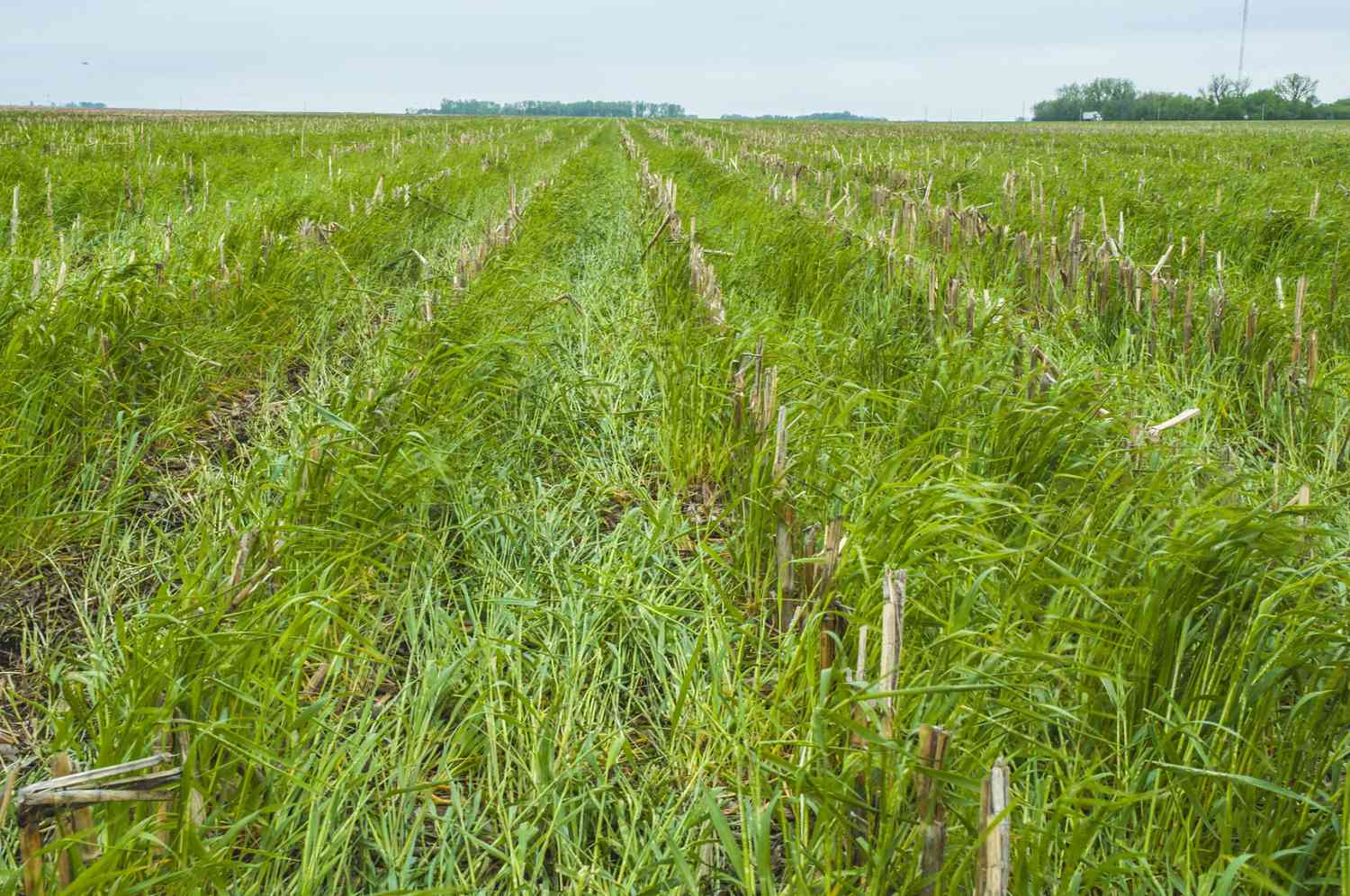
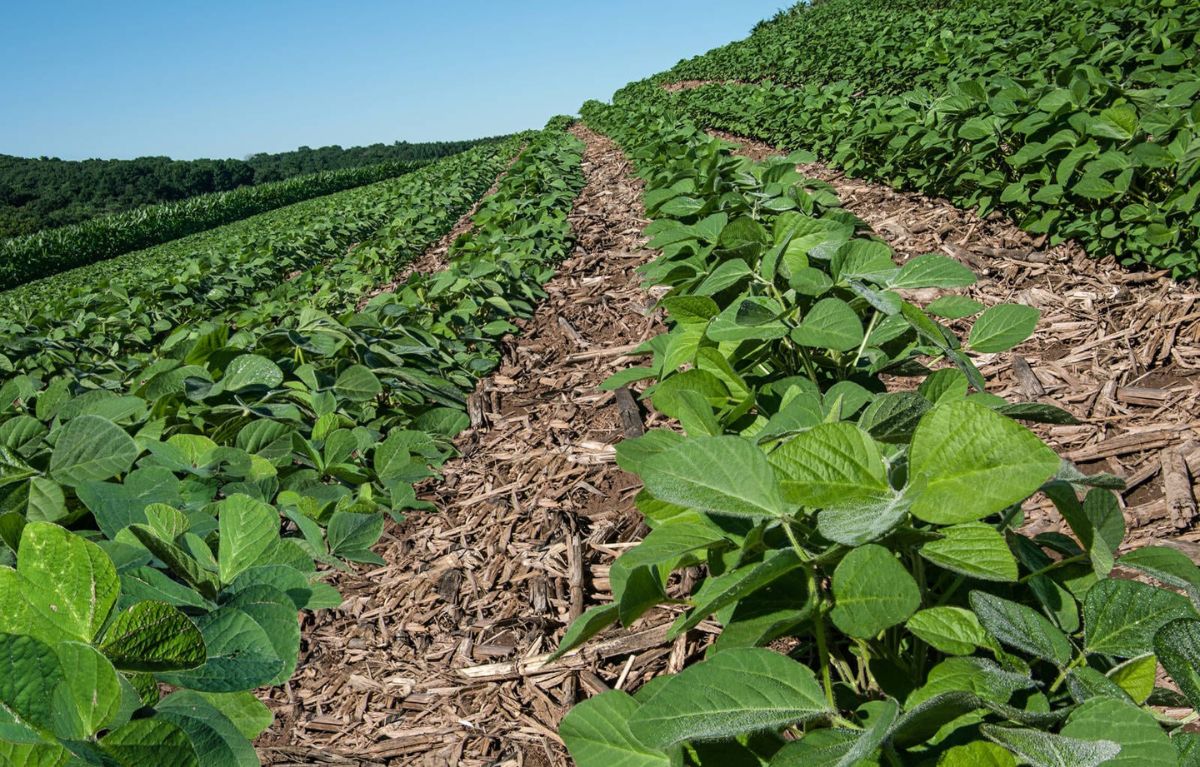
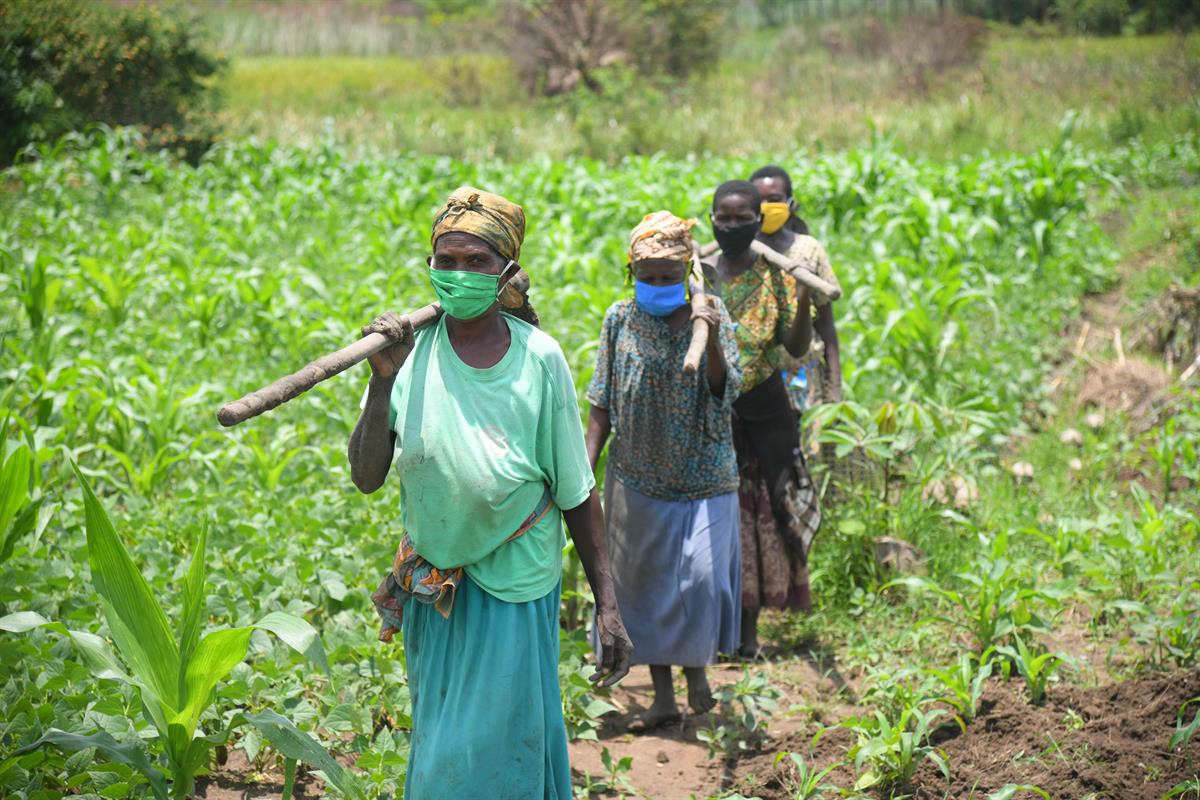
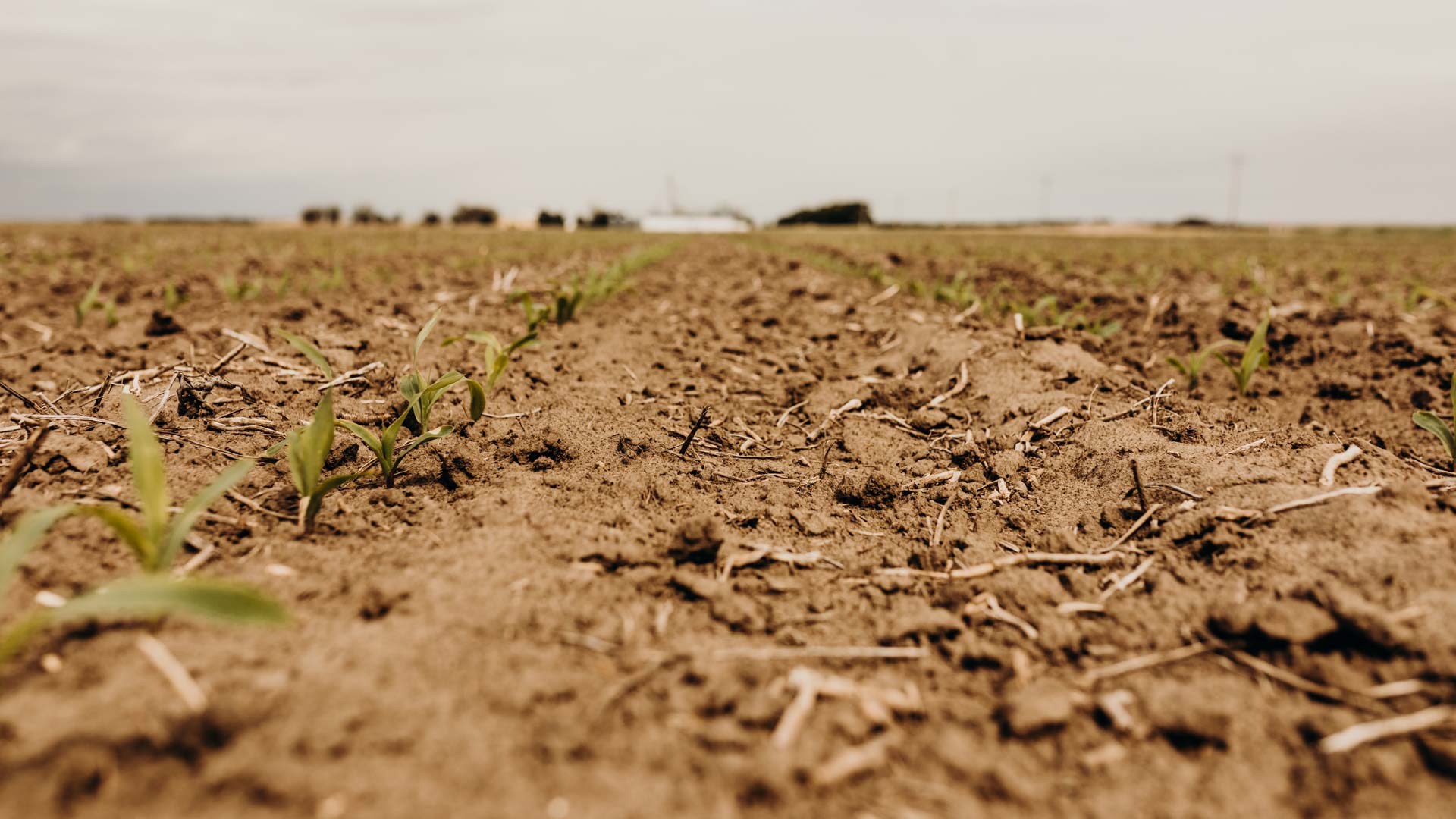
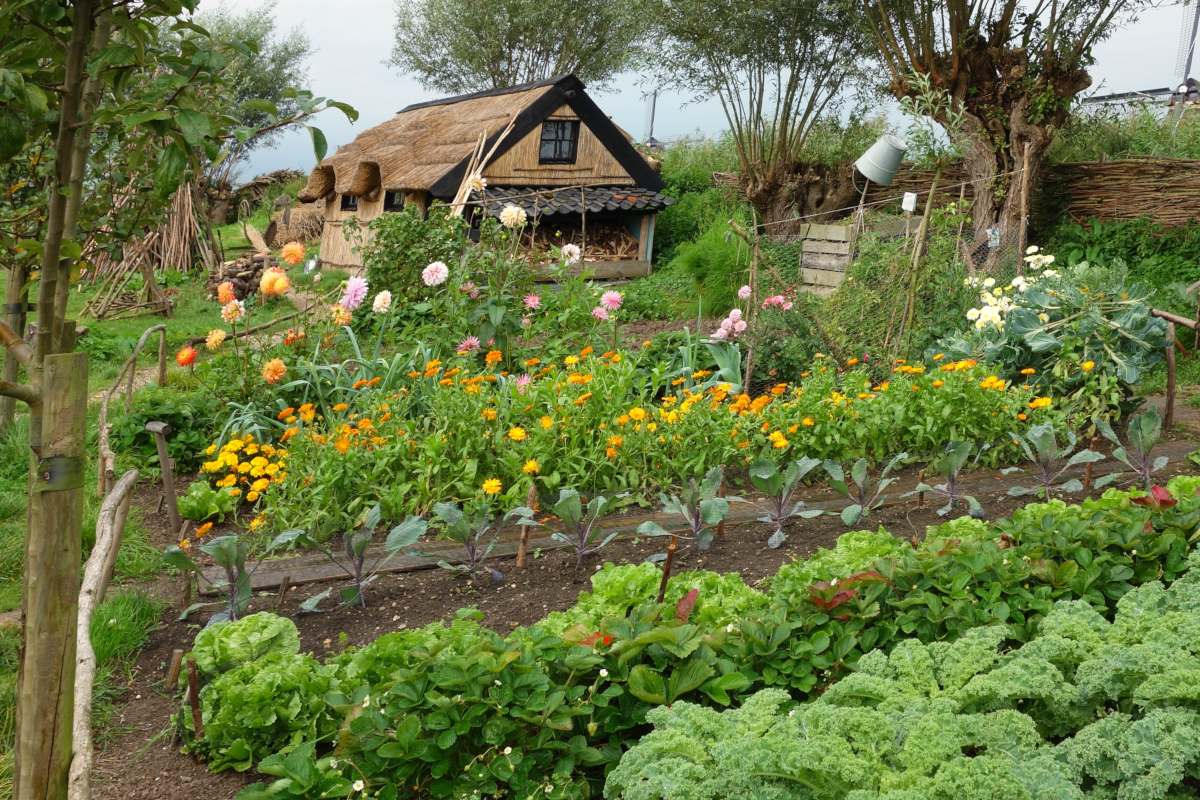

0 thoughts on “How Does Strategic Plant Selection Like Crop Rotation Help Control The Population Of Animal Pests”